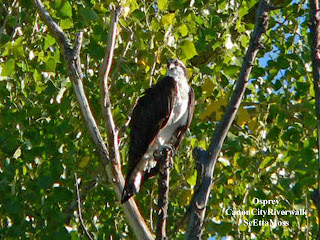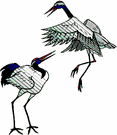 Photo from EnglishPeople.com
Photo from EnglishPeople.comI have been trying to find info about animals in the areas impacted by the massive California wildfires. Fortunately for birds, it is past breeding season so few birds will be directly affected. Birds will, however, be affected due to reduced habitat as will be a problem for herps, mammals and other critters. This especially problematic in southern California since humans are especially greedy in occupying far more land (such as those awful sprawling 35 acre sprawlettes)in these parts than they need, both gobbling up and fragmenting vital wildlife habitat.This is the first info I have found about wildlife resources and needs. SeEtta
October 23, 2007 : 8:23 PM
Thousands of people and pets evacuating
by Jaime Aalen-Dunn, Best Friends Staff
From San Diego to Malibu, more than 150 miles up the Pacific coast, fires are burning out of control. Nearly one million people in Southern California have been forced to flee their homes. More than one thousand homes have already been destroyed. Some fires are believed to have been started by downed power lines, while suspicion of arson exists for others. Gale force winds spread flames for miles as residents evacuated and fire teams battled the relentless fires.
Evacuees grabbed what they could from their homes, including pets, and fled to one of dozens of centers set up by the government. Many local animal rescue organizations across southern California have been asked to help assist with displaced animals. Qualcomm Stadium, home to the Chargers football team in San Diego, is currently the single largest shelter for both people and animals.
President Bush has declared a state of emergency in Southern California. Teams of national guardsmen and military soldiers have been dispatched to assist in supporting with efforts of firefighters and evacuating residents. The fires have overwhelmed crews of more than 5,700 firefighters supported by helicopters, bulldozers and water-laden aircraft. There are 13 wildfires in seven counties, from San Diego north to Malibu, outside Los Angeles, according to the website of the California Department of Forestry and Fire Protection.
Best Friends is currently monitoring the needs of animals and rescue groups in the area. We are assessing what organizations and groups are in need of supplies, volunteers and donations. Best Friends is sending response resources including a climate-controlled vehicle for transporting animals, crates and supplies. The staging area will be located outside of the fire zones, but support staff will be on hand to help out if assistance is needed.
Evacuation information is constantly changing, and we will be providing updates as often as possible as circumstances evolve. We welcome your feedback and updates as known; please post them to the comment section below. If you have information about additional facilities, please list them below along with address and phone number if possible.
San Diego Area -
Qualcomm Stadium- 9449 Friars Rd (people, cats & dogs) - 619-641-3100. Bring leashes & carriers if possible. Need volunteers all levels of experience.
Mira Mesa High School-10510 Reagan Rd.
El Camino High School, 400 Rancho Del Oro Dr, Oceanside, - taking all small animals (no livestock)
Lakeside Rodeo Grounds located at Hwy 67 & Mapleview St. - Accepting large animals only
Fiesta Island 1500 Fiesta Island Rd - 619-235-1169 - Accepting both large and small animals
Camp Diggety Dog, 1835 Imperia Ave. 619-702-4090 – has room for dogs with proof of vaccinations. Dogs must get along with other dogs
Los Angeles Area –
Agoura Animal Shelter, 29525 Agoura Rd. Agoura Hills, CA, 818-991-0071 (small animals)
Castaic Animal Shelter, 31044 N. Charlie Canyon Rd. Castaic, CA 661-257-3191 (small animals)
Pierce College, 6201 Winnetka Ave., Woodland Hills, CA (large animals)
Antelope Valley Fair Grounds, 2551 West Avenue H, Lancaster, CA (large animals)
VCA Animal Hospitals offering free boarding for animals affected by the fires through November 5th. Contact the VCA in your area or visit this website
San Bernardino County –
San Bernardino Animal Control: 1-800-472-5609
Evacuation Center: Jerry Lewis Community Center 7793 Central Blvd., Highland
Riverside County –
Evacuation 24 Hr Hotline 1-800-500-8884
Temporary animal shelter at Temecula Valley High, 31555 Rancho Vista Road.

 Within the next few months, tens of thousands of Snow Geese and lesser numbers of Ross' Geese will make their way to SE Colorado where they will feast in the many grain fields during the winter months. These geese form the basis for the Snow Goose Festival held in February in Lamar.
Within the next few months, tens of thousands of Snow Geese and lesser numbers of Ross' Geese will make their way to SE Colorado where they will feast in the many grain fields during the winter months. These geese form the basis for the Snow Goose Festival held in February in Lamar.

























































